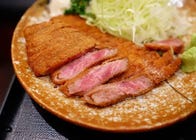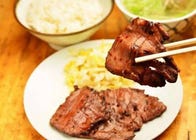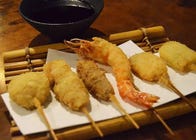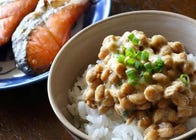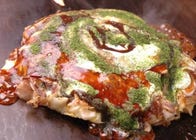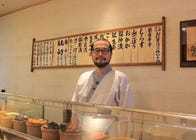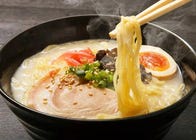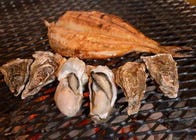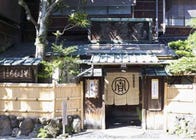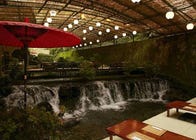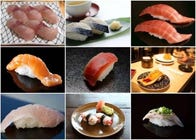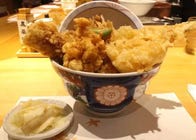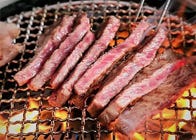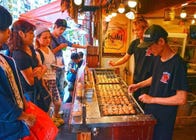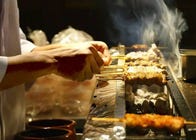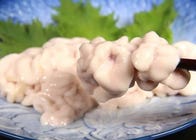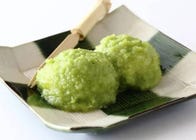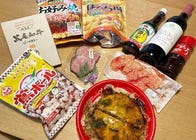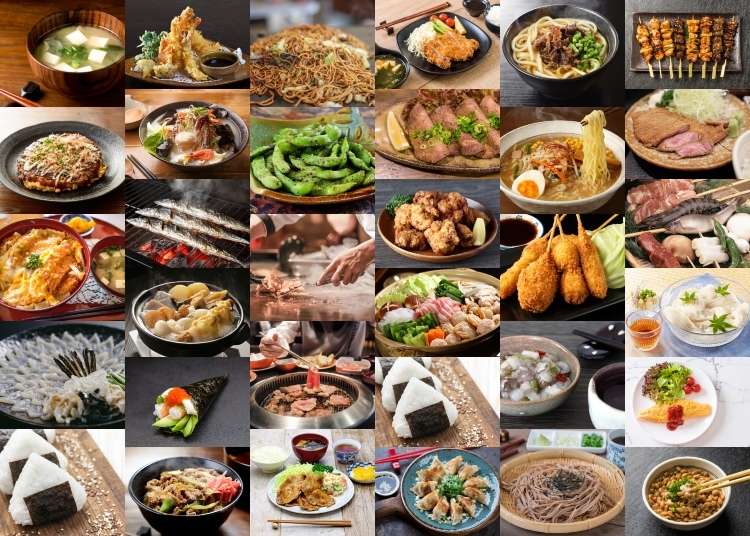
Food in Japan: 32 Popular Dishes You Need to Try on Your Next Visit
- Written by: Lucio Maurizi
Satisfy your cravings for food in Japan with our list of 32 must-try Japanese dishes. From teppan to ramen to gyoza, we've got you covered.
Japanese cuisine is renowned worldwide, but there are numerous other dishes to sample besides sushi. While many are familiar with sashimi, tempura, and ramen, Japanese culinary culture is much more diverse.
If you are planning a trip to Japan, you may wonder what foods are worth trying. To assist you in making a decision, we have assembled a list of 32 delectable Japanese dishes that everyone should experience.
1. Buta-No-Shogayaki (豚の生姜焼き): The 'B-Grade Gourmet' Ginger Pork Classic
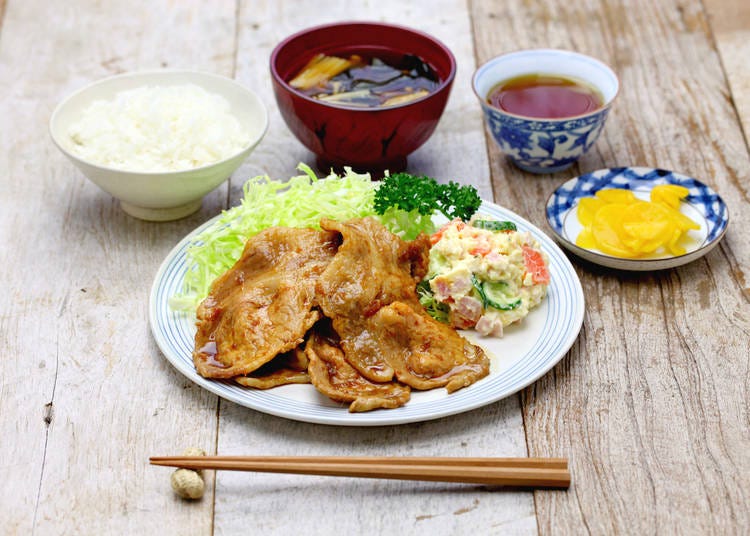
Buta-No-Shogayaki is one of the most popular and delicious Japanese dishes that you can find in many restaurants, izakayas (traditional Japanese restaurant/bars), fast food chains, and even as a bento box (a pre-prepared Japanese-style lunch) available in many grocery stores and convenience stores.
The word "yaki" literally means "grilled." This dish is prepared by grilling thin slices of pork that are dressed with a delicate sauce made of mirin, soy sauce, sake (Japanese rice wine), granola oil, sliced onions, and ginger.
This dish is perfect for a quick and tasty meal that you can enjoy any time of the year.
2. Champon (ちゃんぽん): The Essence of Japanese Noodles
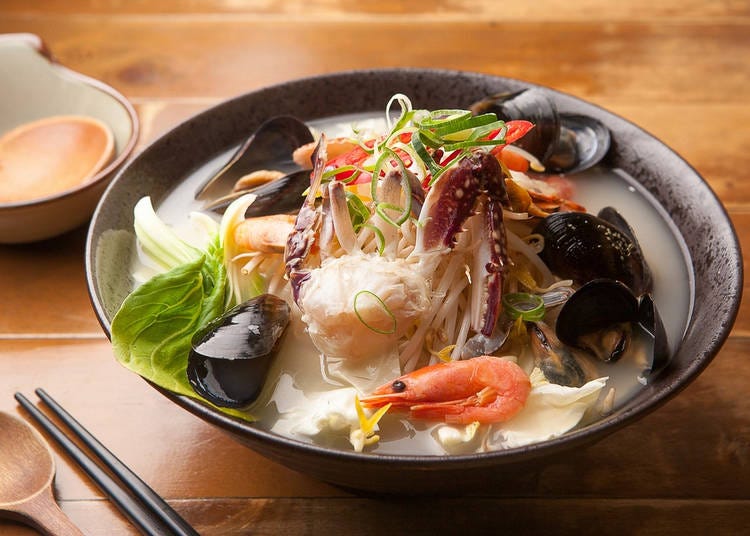
At first glance, Champon might be mistaken for ramen, but it is actually a unique dish in its own right. Originating from Nagasaki, it was first served in a Chinese restaurant during the Meiji era (1868-1912). Unlike ramen, the noodles used in Champon are boiled in the soup itself, giving it a distinctive taste and texture.
Champon is a seasonal dish that uses a combination of ingredients such as pork, seafood, and vegetables. These are fried in lard before a soup made from chicken and pig bones is added to create a flavorful broth. As a result, each serving of Champon is different and offers a unique experience that varies depending on where you eat it.
In fact, Champon is not just limited to Nagasaki; it can be found in many countries throughout Asia and in different regions of Japan. Each place puts its own spin on the dish, creating a diverse range of styles and flavors that are sure to satisfy your appetite.
3. Edamame (枝豆): The Irresistible Boiled Soybean Snack
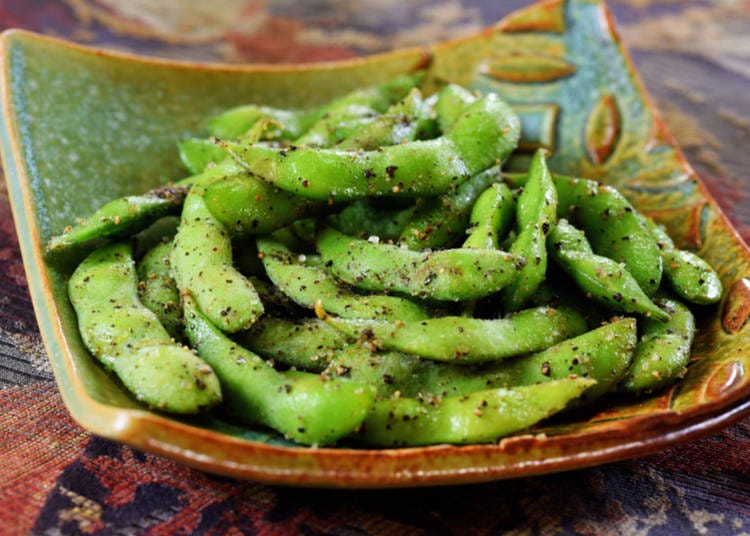
Edamame are not technically a dish, but they are a very popular food in Japan. These are immature soybeans that are still in their pods. They can be served hot or cold, and sometimes grilled instead of boiled. Typically, they are only dressed with salt, and they make for an amazing appetizer. Once you try a few, you'll find yourself reaching for more and more. Edamame usually accompany a meal in all izakaya, and they are almost always part of the menu in the vast majority of Japanese restaurants in Japan.
4. Fugu (ふぐ): The Delicate Dance with Pufferfish
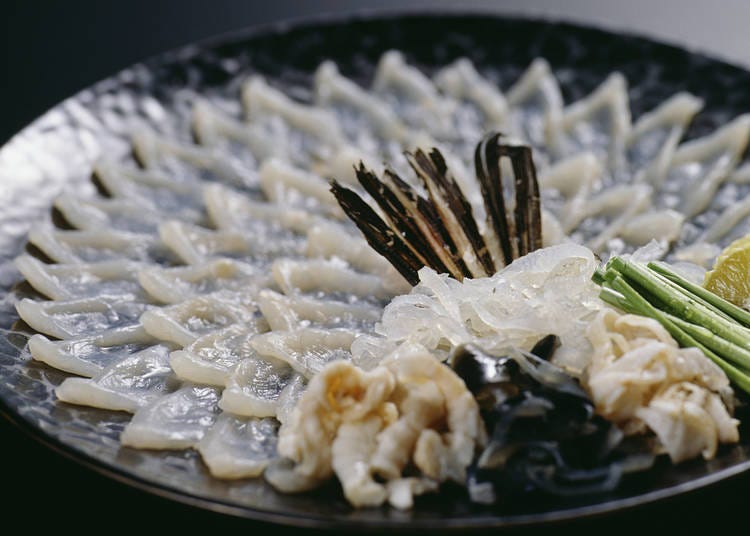
For those looking not only for amazing food in Japan, but also for a thrilling experience, fugu is the dish to try!
The fugu is a pufferfish that is, yes, delicious, but it can also be lethal due to a toxin in some parts of its body. Fugu is usually served as sashimi or in certain kinds of Japanese nabe hot pots.
The preparation of this fish, due to its characteristics, is rigidly controlled by the Japanese government. Chefs who aspire to prepare this fish must undergo at least three years of very rigorous training to get their license. Before being served, the toxic parts of the fish are removed, making it safe to serve.
Interestingly, fugu liver is considered the tastiest part of the fish, but it’s also the one that can be the most poisonous. As a result, serving fugu liver was outlawed in Japan in 1984. Should you try this dish, you’ll certainly remain amazed by its taste, but do careful research before ordering it in a restaurant (and never try to prepare it by yourself).
5. Gyoza (餃子): The Delightful Journey of Japanese Dumplings
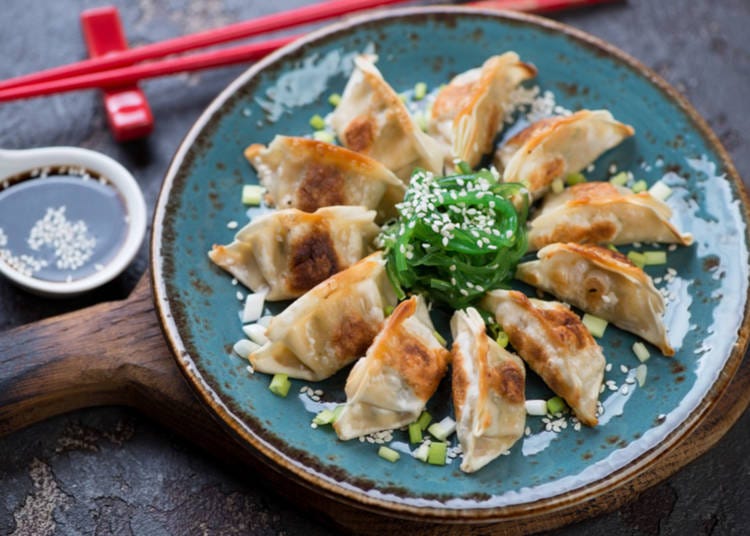
Gyoza are dumplings that are shaped like a crescent moon. They are a popular dish in Japanese restaurants and can be found almost everywhere, regardless of their style. Although originally from China, the types of gyoza you will find in Japan are usually quite different from the original.
There are various types of gyoza available in Japan, but one of the most popular is "yaki-gyoza". These dumplings are made with minced pork, cabbage, garlic, onion, and ginger. They are then lightly fried until they become crispy and turn a nice dark golden color.
You can enjoy gyoza with a dip made of soy sauce, rice vinegar, and spicy oil.
6. Gyudon (牛丼): The Bowl of Beefy Goodness
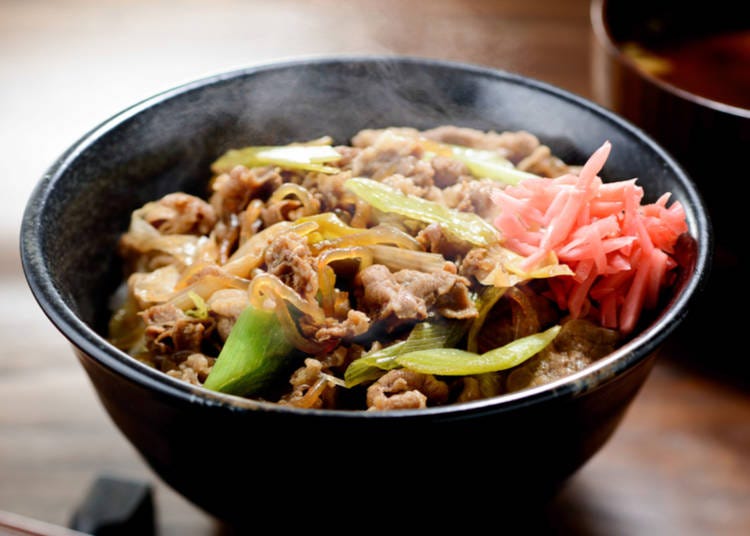
Gyudon is a mouth-watering dish consisting of beef served over rice (gyu = beef). It is a quick meal that is often served in specific restaurants or Japanese fast-food chains such as Yoshinoya.
To make this dish, thinly sliced beef and tender onion are simmered in dashi broth (a popular Japanese ingredient) and then seasoned with mirin and soy sauce. The dish is then served over a bowl of steamed rice. Sometimes, it is topped with a lightly cooked egg.
If you want to experience a typical Tokyo office worker’s lunch break, this quick and tasty dish is a must-try. You will feel full and satisfied, and ready to continue your sightseeing and exploration with renewed energy.
7. Gyukatsu (牛カツ): The Lure of the Beef Cutlet
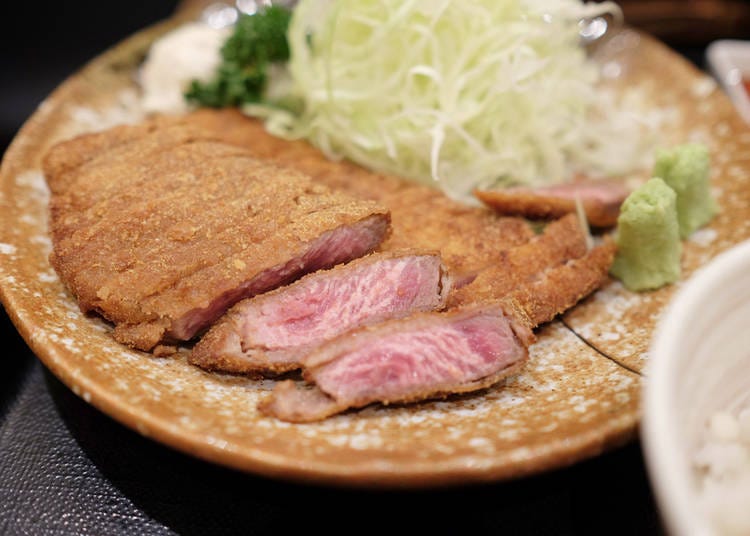
If you're fond of tonkatsu, a popular pork-based dish, you should definitely give its beef variation a try. This dish involves deep-fried breaded beef, which is served with a side of cabbage, barley rice, miso soup, potato salad, and pickles. The preparation method results in a tender and crunchy texture, and the dish has a flavorful taste that's not too overwhelming. Although it's not as commonly available as the pork version, if you do happen to come across it, it's definitely worth trying.
8. Gyutan (牛タン): An Ode to Beef Tongue Delicacies
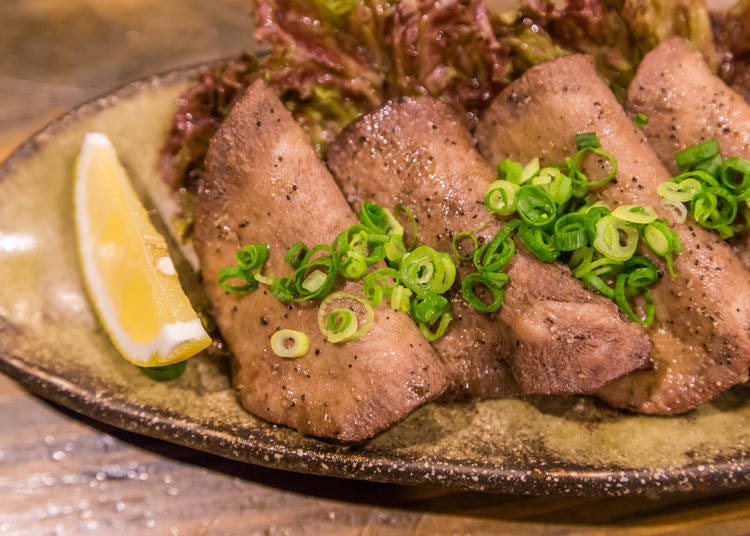
At first glance, this dish may seem unusual depending on where you're from, but we encourage you to keep reading. Gyutan is a dish made of grilled beef tongue, as the name suggests - "gyu" meaning cow and "tan" meaning tongue. This dish is typically found in yakiniku restaurants, prepared with salt or various sauces (often including lemon) and scallions. The meat is thin, delicious, and tender.
Gyutan originated in Sendai, where the owner of a yakitori restaurant opened a new establishment in 1948 which offered gyutan. Since then, the dish has become increasingly popular throughout Japan. Give it a try and you'll quickly see why!
9. Karaage (から揚げ): Japan's Tasty Fried Chicken
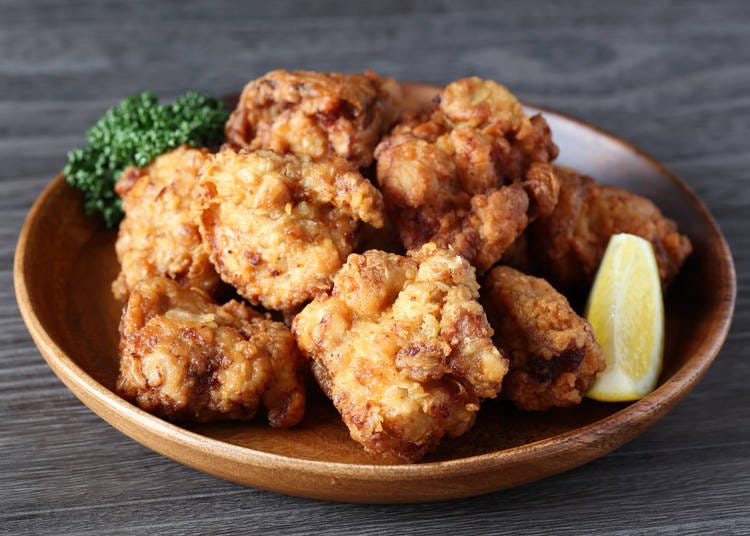
When you arrive in Japan, you will instantly notice the popular Japanese fried chicken dish called karaage. Although karaage usually consists of chicken, some regions may use other meats such as pork.
The meat is lightly coated with wheat flour or potato starch and is then deep-fried in oil. In some cases, the meat is marinated before cooking. Karaage is typically served with a slice of lemon, but it can be enjoyed with or without it.
Restaurants, street-food carts, izakaya, and convenience stores frequently serve the chicken variety of karaage. It's a delicious, fast, and affordable dish. However, the only downside is that it's so tasty, it can be addictive!
10. Katsudon (カツ丼): The Breaded Pork Bowl
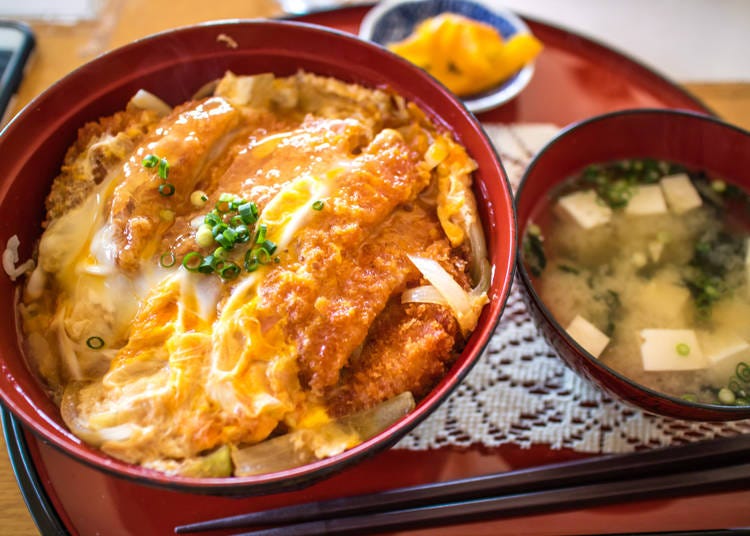
If you're a fan of beef bowl dishes like gyudon, you'll love Katsudon, a similarly popular Japanese dish made with pork. This tasty and affordable meal is often overlooked by foreign visitors, but can be found in many restaurants and Japanese-style fast food chains. The dish consists of a bowl of rice topped with deep-fried pork cutlet, egg, vegetables, and condiments, making it the perfect option for those on the go.
Although it's a common dish in Japan, there are several varieties to choose from, including those served with tonkatsu sauce, demi katsudon (a specialty of Okayama), shio-katsudon (flavored with salt), or miso-katsu (originally from Nagoya). Regardless of which type you choose, you're sure to enjoy this delicious and satisfying meal!
11. Kushikatsu (串カツ): Thrilling Skewered Deep-Fried Treats
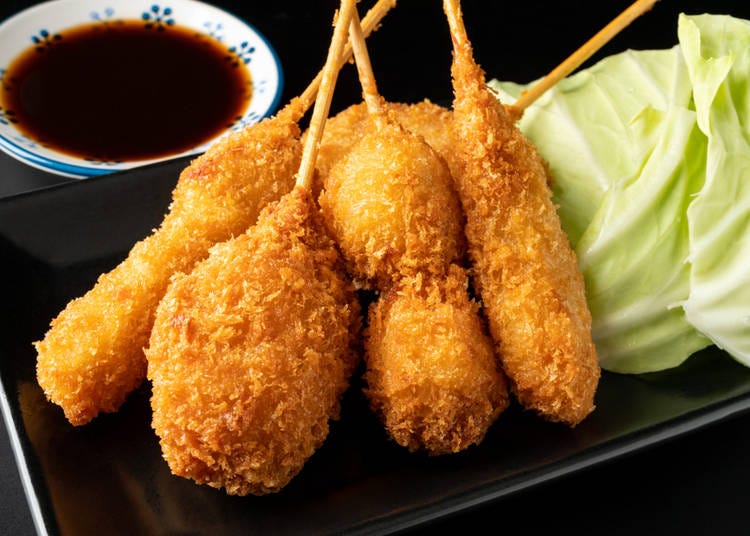
Kushikatsu, also known as kushiage, is a delicious dish consisting of crunchy deep-fried skewered meat, fish, or vegetables. The name of the dish refers to the way it is prepared, with "Kushi" meaning skewers and "katsu" referring to the deep frying of a meat cutlet.
Kushikatsu can be made using a variety of ingredients, including bamboo shoots, lotus root, cartilage (nankotsu), and gizzard (sunagimo). Each ingredient has its unique flavor and texture, making the dish even more exciting to taste.
Apart from the different ingredients, there are also several geographical varieties of Kushikatsu. For example, Osaka and Tokyo (which also serves pork rib kushikatsu) prepare the meat slightly differently and dress it with brown sauce. In Nagoya, Kushikatsu is served with doteni, a rich miso-based dish with beef tendon, offal, and daikon radish. The region also uses different sauces and batter to prepare the dish.
12. Miso Soup (味噌汁): The Soul-Warming Broth
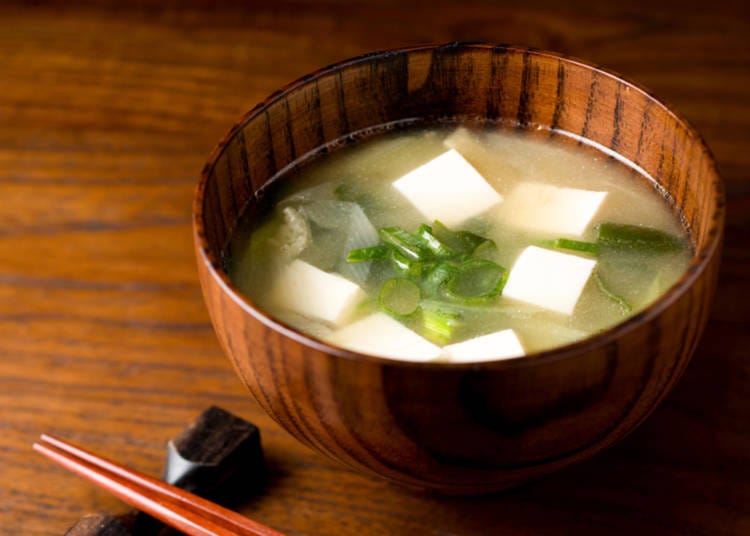
Miso soup is an unavoidable dish when it comes to talking about food in Japan. It is a staple in Japanese cuisine and can be served with almost any meal, be it breakfast, lunch, or dinner. This simple yet flavorful soup makes a fantastic side dish to complement the rest of your food.
Dashi, one of the primary ingredients in miso soup, is mixed with miso paste, which is made by fermenting soybeans, to create this famous soup. Other ingredients are added according to individual preferences.
Typically, miso soup is served with tofu, scallions, and wakame seaweed. However, other ingredients such as daikon, shrimp, fish, mushrooms, potatoes, onions, or meat can also be added.
Miso soup is highly recommended during the cold winter months, and it is a must-try dish before leaving Japan.
13. Nabe (鍋): Enjoy Japan's Hot Pot Culture
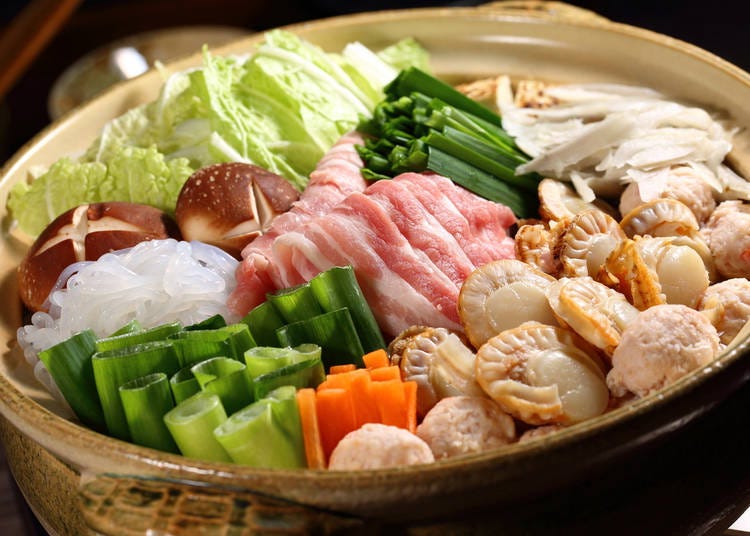
Nabe refers to a cooking pot, and in Japanese, it can also be referred to as "nabemono," which translates to "things in a cooking pot." While the name suggests that it's a simple dish, in reality, there are many variations of nabe in Japan. It's a popular dish throughout the year but is particularly enjoyed during colder months.
Nabe is a dish that can be enjoyed both in Japanese restaurants and at home. The preparation involves boiling a variety of ingredients such as meat, fish, shellfish, vegetables, and tofu in seasoned or unseasoned water.
Sumo wrestlers are known to be big fans of nabe, especially "chanko nabe," which usually includes meatballs, chicken, vegetables, and noodles. It's designed to be served with extra ingredients so that wrestlers can gain weight.
Another popular variation of nabe is shabu-shabu, named after the sound made when thinly-sliced meat is dipped into boiling water. This dish is served with beef or pork, vegetables, and tofu and is enjoyed with a sesame dipping sauce or ponzu, which is a lemon-based dressing, or a combination of both.
Sukiyaki is a sweeter version of shabu-shabu where the ingredients are stewed in sweetened water and soy sauce and then enjoyed with a raw egg dip.
Yose nabe, which means "putting together," is a nabe variety where all the ingredients, such as meat, fish, vegetables, and tofu, are cooked together in the pot at the same time. This dish is usually based on a soup of miso or soy sauce.
There are many types of nabe available in Japan, and it's definitely worth trying them all to find your favorite!
14. Natto (納豆): The Fermented Soybean Sensation
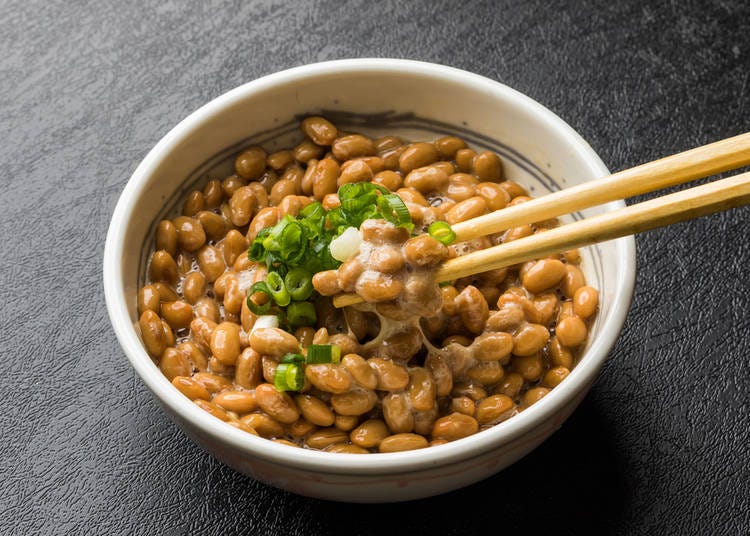
Natto, a fermented soybean dish, is a staple in the daily diet of most Japanese people. However, it's a type of food that many foreigners find unappetizing due to its strong smell and sticky consistency. Despite this, natto is a genuine Japanese delicacy that is worth trying at least once.
Typically served with rice and dipped in soy sauce or spicy mustard, natto can be an acquired taste. It may take some getting used to, but don't let that intimidate you from giving it a try. You might be surprised to find that you enjoy it and have a more Japanese palate than you thought!
15. Oden (おでん): The Wintry Delight of Japan
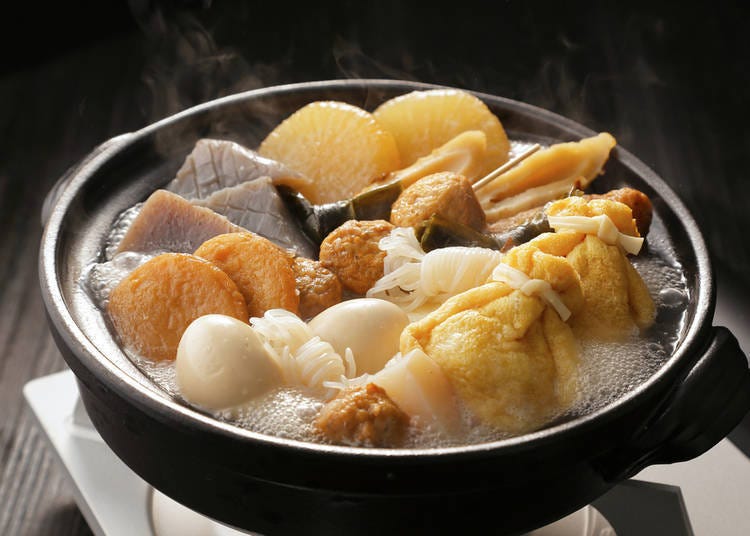
Oden is a delicious and warming dish that is perfect for cold winter days. It is a type of one-pot meal made with various ingredients, such as eggs, konjac, fish cakes, and daikon, all served in a dashi and soy soup.
Although some restaurants specialize in preparing this dish, you can easily find oden in many Japanese fast-food chains and convenience stores.
Oden can be prepared in different ways, and its name may even vary depending on the region. For instance, in Nagoya, it may be known as Kanto-ni. Additionally, the soups used to boil the ingredients can also differ depending on the area.
Oden is an inexpensive and unique dish that you will never tire of, particularly if you are traveling through different cities in Japan.
16. Okonomiyaki (お好み焼き): Japan's Savory Pancake Paragon
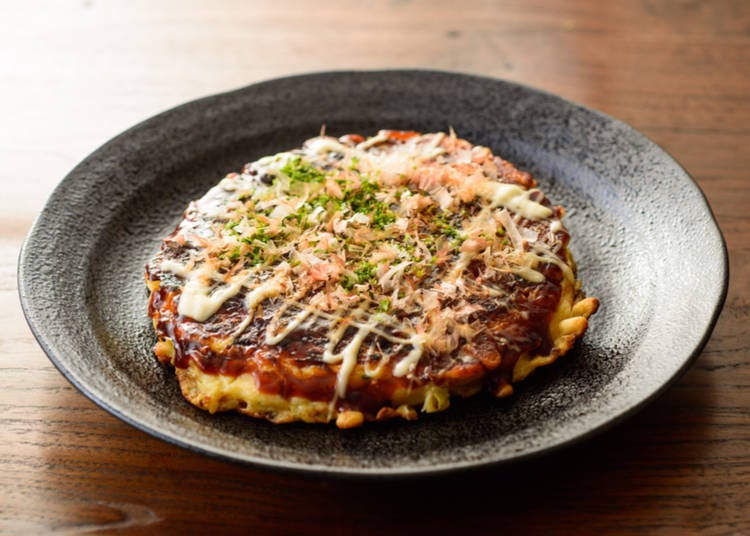
If you're traveling to Japan, trying out the various types of okonomiyaki, a staple dish, is a must. This savory dish, which can be compared to a Japanese frittata or pancake, is made using a wide range of ingredients, as suggested by its name's etymology (meaning "what you like" or "how you like" + "grilled").
Two of the most popular varieties of okonomiyaki are the Kansai-style and the Hiroshima-style. The Kansai version is the most common, with a batter prepared using flour, nagaimo (a kind of yam), dashi (or water), eggs, cabbage, pork belly, octopus, squid, shrimp, mochi, or cheese, and konjac. Osaka is particularly well-known for its okonomiyaki, as it is believed to be the dish's birthplace.
In the Hiroshima-style, the ingredients are arranged in layers rather than mixed together. Toppings usually include noodles such as yakisoba or udon, eggs, and a lot of sauce.
There are many other types of okonomiyaki available in various regions of Japan, such as Tokushima, Hamamatsu, and Okinawa.
If you're in Tokyo, you should visit the Tsukishima district, which is famous for both okonomiyaki and monjayaki. On Monja Street, you can try monjayaki, a dish similar to okonomiyaki but with a less dense texture and different ingredients.
17. Omuraisu (オムライス): The Enchanting Omelette Rice Creation

The name of this flavorful dish derives from the contraction of the words omelet and rice. Omuraisu, as the name suggests, is an omelet filled with fried rice and usually topped with ketchup.
The dish seems to have originated in Tokyo, in a western-style restaurant, roughly 100 years ago. You’ll find this dish in most Japanese cafes that also serve food, as well as in several restaurants. If you’re staying with friends from Japan, chances are they’ll know how to prepare it, as it’s a common dish among Japanese people.
Once again, a filling, cheap, and tasty one-dish meal that will certainly be popular among adult visitors, as well as children!
18. Onigiri (おにぎり): The Staple Rice Ball Delight
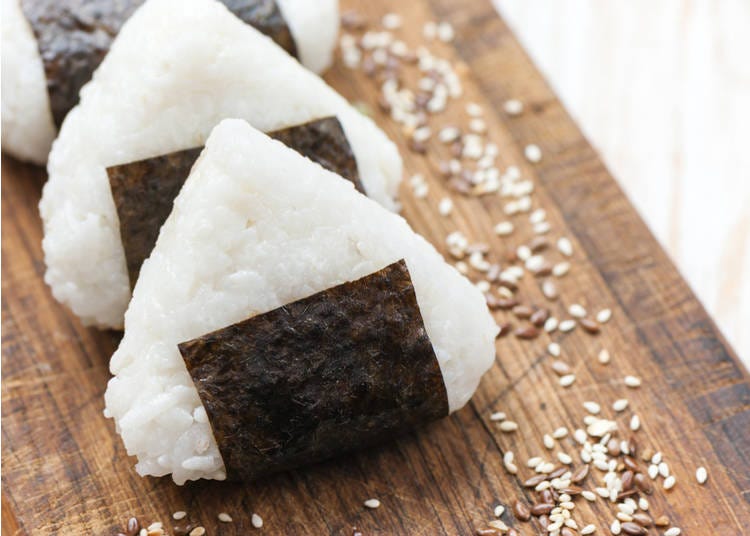
Have you ever come across the famous Japanese rice ball, the onigiri, in an anime, movie, video or documentary? Although it is not a very common menu item in restaurants, it is considered the king of on-the-go dishes and can be found in almost every grocery and convenience store.
The onigiri is a simple rice ball that can be flavored with spices or filled with various ingredients such as vegetables, meat, fish, seafood, and more. Depending on the region and one's preference, it can be wrapped in a sheet of flavored or unflavored nori (seaweed).
While sightseeing in Japan, many people tend to eat mainly onigiri due to its cheap price (usually under 200 yen), availability, and simplicity.
19. Ramen(ラーメン): The Delectable World of Noodles and Broth
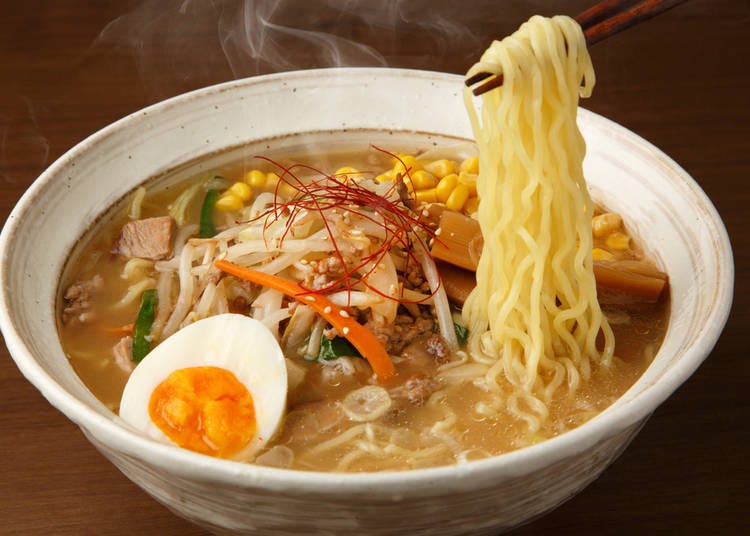
Ramen is a well-known dish globally, especially the instant variety. However, in Japan, the authentic version is far superior to its instant counterpart in terms of taste and variety.
The broth for ramen can be made from chicken, pork, beef, fish, or vegetables, flavored with soy sauce, miso, dashi, and many other seasonings. It is usually served with scallion, seaweed, tofu, and bamboo shoots, but there are countless other combinations to choose from.
Each region and restaurant has its unique recipe, leading to original and delicious meals. The noodles used in ramen are also specially made and have a soft yet chewy texture.
The most common soup stocks used for ramen are miso, salt, soy sauce, and curry. Ramen is the go-to meal for the Japanese after a long day or night out, and it's commonly regarded as fast food. It's typically served hot, although some variations can be served cold, and it's a favorite on cold days.
20. Robatayaki (炉端焼き): The Art of Fireside Cooking
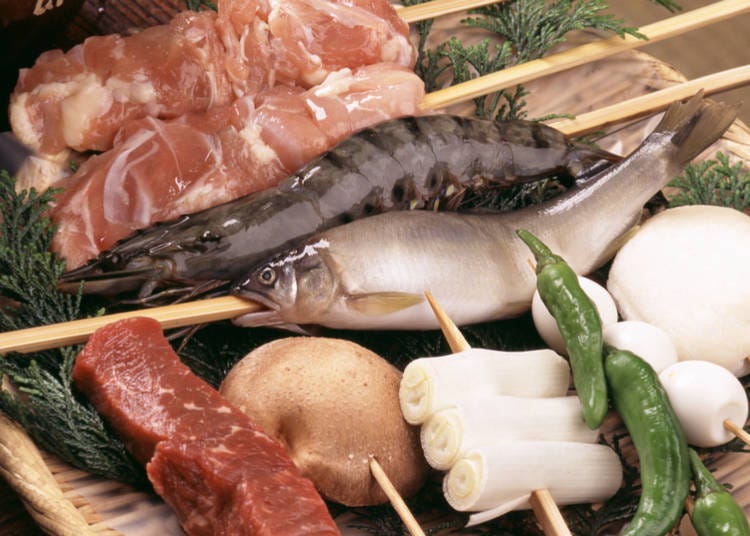
Robatayaki (or robata) is a unique Japanese cuisine in which food is grilled on an irori style fireplace (wide, flat, open fireplace) over charcoal. This particular dish is usually found only in specialized restaurants, so you may have to look/ask specifically for it.
The list of food at robata restaurants is everything you can think of, although traditionally it is a combination of seafood and vegetables.
Most visitors miss this amazing food in Japan. Make sure you taste a real slice of Japan by looking for a good robata (there are many in Tokyo and all over Japan).
21. Soba (蕎麦): The Buckwheat Noodle Escapade
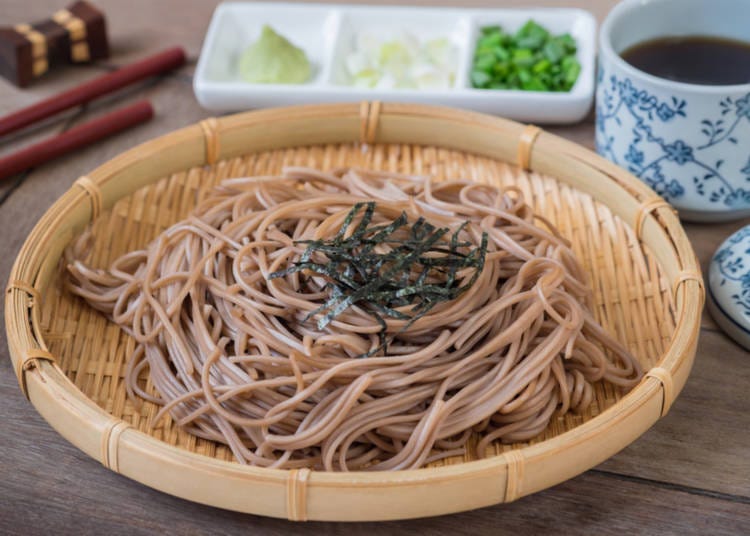
Soba is a type of noodle made from buckwheat flour, which is a specialty dish from Japan. It is a very popular dish and can be found in both general noodle restaurants and specialized, often expensive ones. Preparing soba at home is relatively simple, as you can buy the noodles and soup in which they are dipped from a grocery store.
Soba can be enjoyed in different ways, either in a cold dip or a broth as a noodle soup. This dish comes in various varieties depending on the region and the season you are visiting. Don't forget to try a soba dish next time you visit a restaurant in Japan!
22. Somen (そうめん): Delightful Thin Noodles
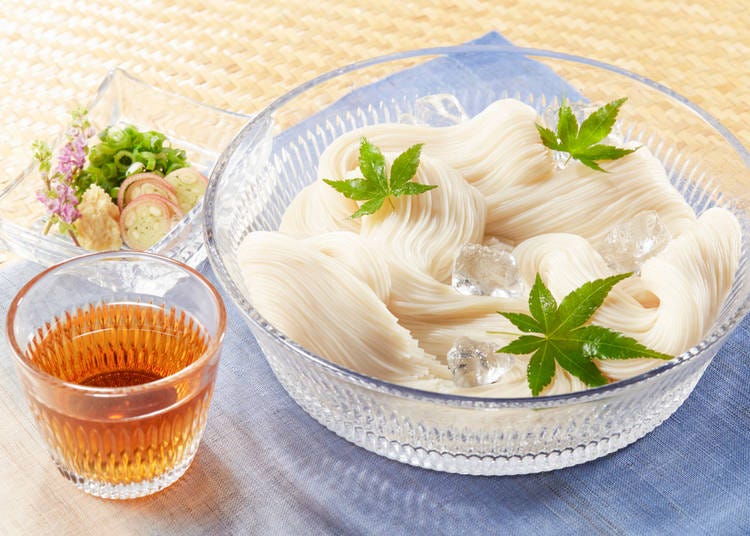
Somen is the Japanese version of a prevalent kind of noodle across Asia. Made out of wheat flour, it’s usually served cold. These skinny noodles are served with a simple cold dipping sauce or a sauce flavored with onion, ginger, and myoga (a different kind of ginger).
This dish is particularly popular in summer when a dish of somen chilled with ice cubes is all you need to recharge, fill up, cool off, and take a break from the brutal Japanese summer heat.
23. Sushi and Sashimi (寿司 & 刺身): The Raw Elegance of Japanese Cuisine
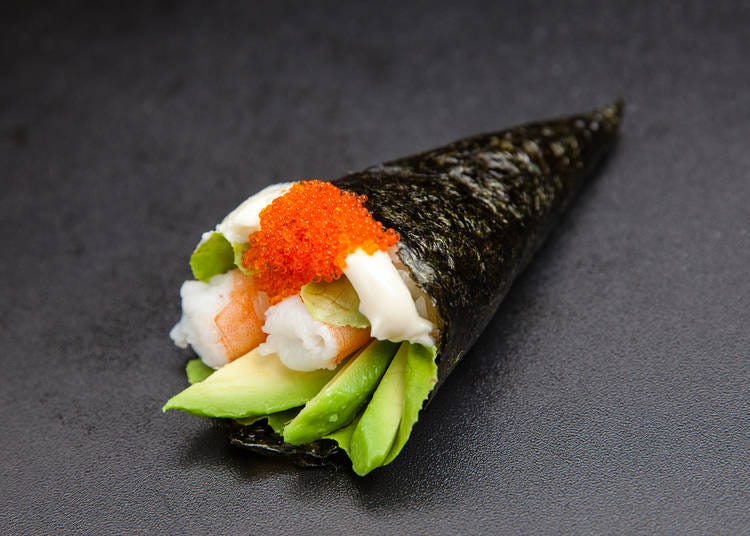
Sushi and sashimi are among the most famous foods in Japanese cuisine. They are regarded as an art form, with sushi chefs often practicing as apprentices for years before being considered masters. Despite their popularity, many people fail to understand the variety of cuts and preparation that go into creating these dishes.
However, good quality sushi and sashimi can be found in Japan at a fair price. There are options available for all palates and budgets.
One unique dining experience in Japan is offered by rolling sushi restaurants, where you order from a tablet at your table and the sushi is served to you via a rolling mat. At these restaurants, known as 100 yen-sushi or sushiro, each dish costs only 100 yen and the food is excellent.
A dish that is often missing outside of Japan is temaki zushi, or hand-rolled sushi. While you can find restaurants offering this dish, it's a fun and easy dish to make at home. You'll need sushi rice, thin slices of your favorite fish, seaweed sheets, and any other ingredients you'd like to add. Common ingredients include cucumber, crab, avocado, and wasabi.
To make temaki zushi, spread the rice on a sheet of seaweed, add your fillings, roll the seaweed into a cylinder or cone, and enjoy with soy sauce. If you're in Japan, consider proposing a temaki zushi party - it's sure to be a hit!
24. Takowasa (たこわさ): The Wasabi Octopus Experience
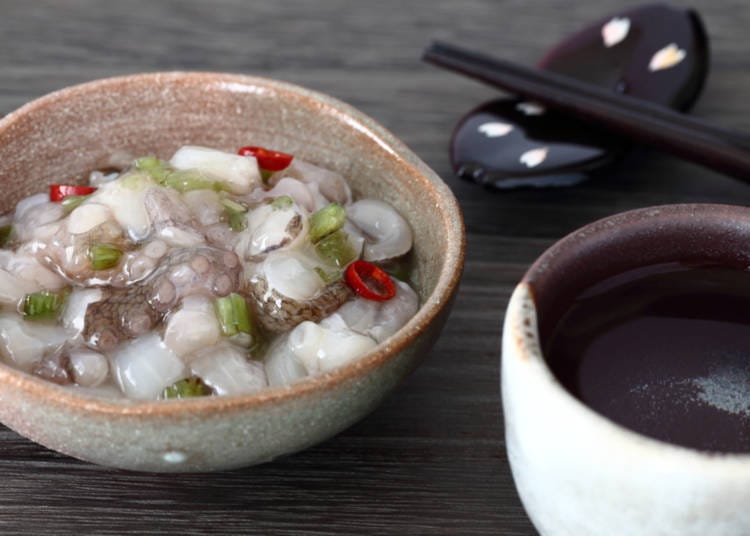
Takowasa is raw octopus (tako) served in a wasabi sauce (wasa). This is one of those Japanese dishes that, depending on your cultural background, may appear weird. Do try it out!
Takowasa is a common appetizer in many restaurants, especially in an izakaya. It’s very popular and for a good reason. It’s tasty, unique, and a true symbol of Japanese popular food tradition.
25. Tempura (天ぷら): Japan's Light and Crispy Masterpiece
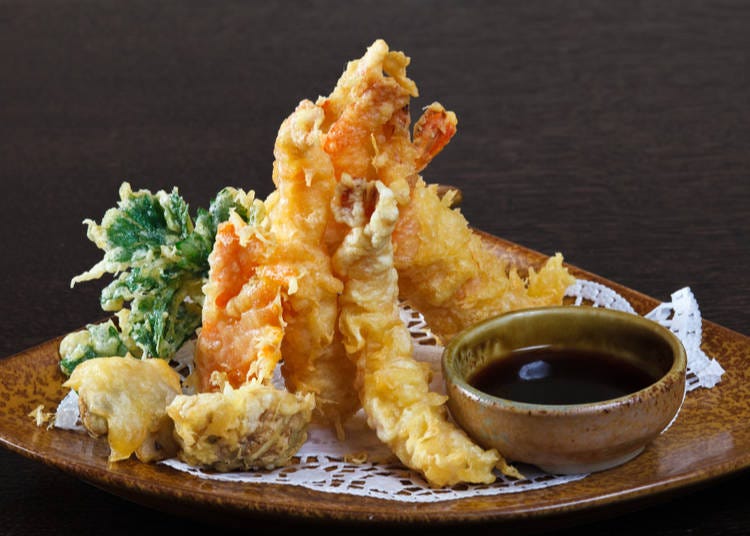
Tempura is a delicious dish that can be enjoyed throughout the year, especially for those who love to socialize with friends over drinks.
Tempura typically includes shellfish, fish, chicken, or vegetables coated in a flavorful batter and then deep-fried to a perfect level of crunchiness.
You can savor tempura as is, or with a dipping sauce. While many restaurants offer this dish, some specialize in it, providing a wider range of options for an even more fantastic immersion into traditional Japanese cuisine.
26. Teppanyaki (鉄板焼き): The Theatrical Grilling Artform
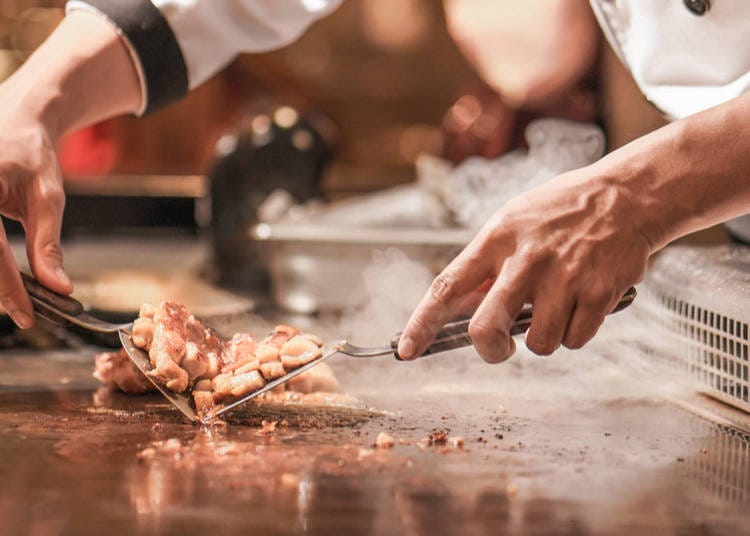
Teppanyaki is a Japanese style of cooking that is not very well known but still absolutely delicious. The word Teppan means iron plate, while yaki means grilled.
The term Teppanyaki is used to refer to a wide variety of dishes, including okonomiyaki, yakisoba, and monjayaki. However, it's typically used to describe a particular type of western-influenced food preparation.
Typical ingredients for Teppanyaki dishes are beef, shrimp, vegetables, chicken, and scallops. These ingredients are cooked on a hotplate, usually with soybean oil.
Some of you may be familiar with this type of cooking because in the United States, Teppanyaki restaurants are quite popular, although they're known as hibachi.
If you visit Japan and want to try some amazing food that blends the best of Japan and the West, you should definitely give Teppanyaki a try.
27. Tonkatsu (とんかつ): The Crispy Pork Cutlet
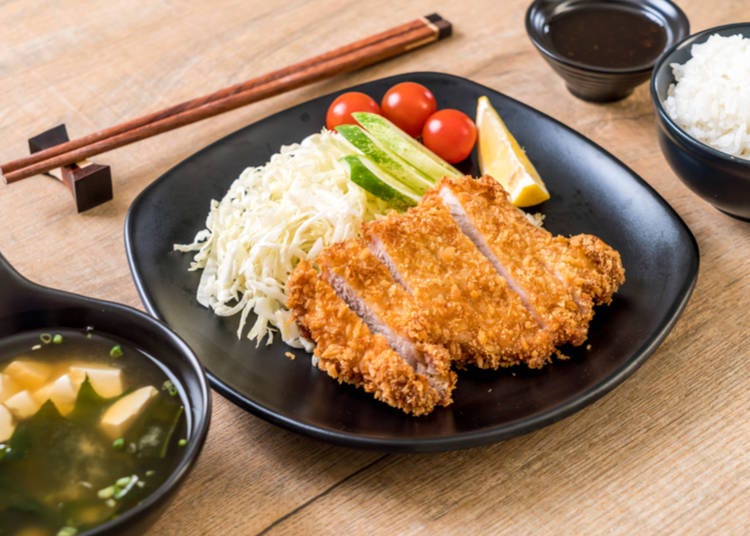
Tonkatsu is a popular and easy-to-find Japanese dish consisting of a breaded pork cutlet that is deep-fried in vegetable oil until golden brown. You can easily find this delicious and affordable dish in many chain restaurants, grocery stores, and convenience stores, or you can even make it at home!
To prepare the dish, season the meat with salt and pepper, coat it in flour, dip it in beaten egg, and cover it with panko (Japanese bread crumbs). Then, deep fry the cutlet until crispy and serve it with cabbage, potato salad, and a brown sauce or karashi.
Tonkatsu is also great for making sandwiches, making it the perfect meal on-the-go.
28. Udon (うどん): Glorious Thick Noodles
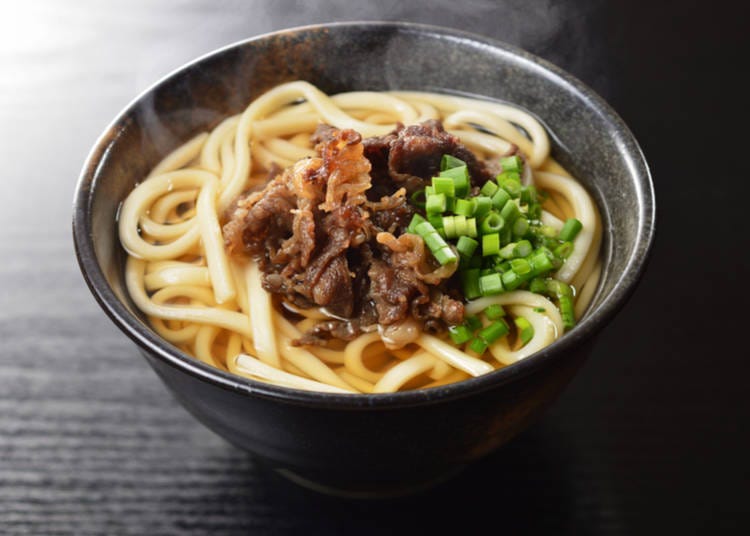
Japan has a wide variety of noodles, and udon is one of the most popular, just like ramen. Udon is a thick noodle made from wheat flour, which you can enjoy either in its simplest form - with broth made of dashi, mirin, and soy sauce - or in many different combinations.
For a hearty meal, try it with tempura, or for a more delicate taste, with tofu. Udon can be served hot or cold, depending on the season or your personal preference, and the style of preparation varies depending on the region you're visiting.
Although the word "udon" refers to the noodles themselves, there are no limits to the flavors, soups, and ingredients that can be added. As a matter of fact, challenge yourself to try out as many styles of udon as possible during your trip to Japan. Not only will you be satisfied, but you'll also be nowhere near the end of the list of possible dishes!
29. Yakiniku (焼き肉): Grilled Meat, the Japanese Way
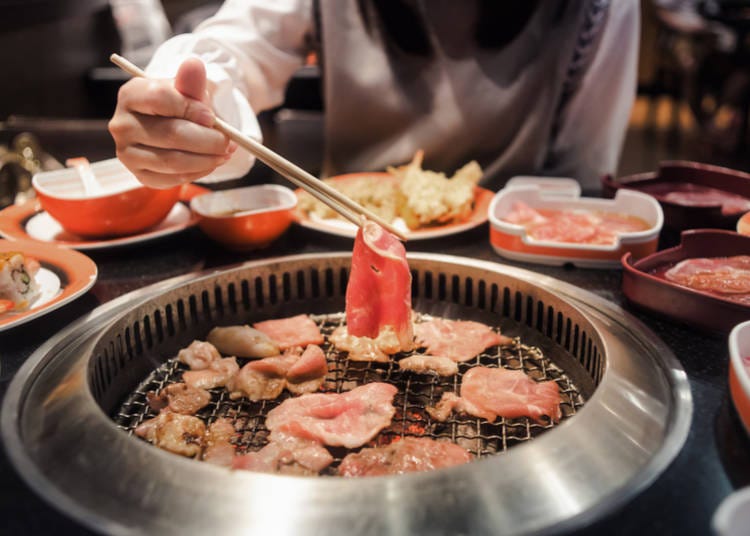
Yakiniku is a style of cooking that involves grilling meat, also known as Korean or Japanese barbecue. While Korean-style barbecue typically involves marinated meats, Japanese-style barbecue does not. Yakiniku restaurants are very popular and offer a wide range of options, from high-end to budget-friendly, with some even offering all-you-can-eat menus.
When dining at a yakiniku restaurant, you can choose from a vast selection of meat or vegetables, seasoned or unseasoned, which you then grill yourself on a hot plate or grill embedded within your table. You can then add various sauces, such as lemon, BBQ, and many others, or simply salt and pepper to taste.
30. Yakisoba (焼きそば): Tasty Fried Noodles
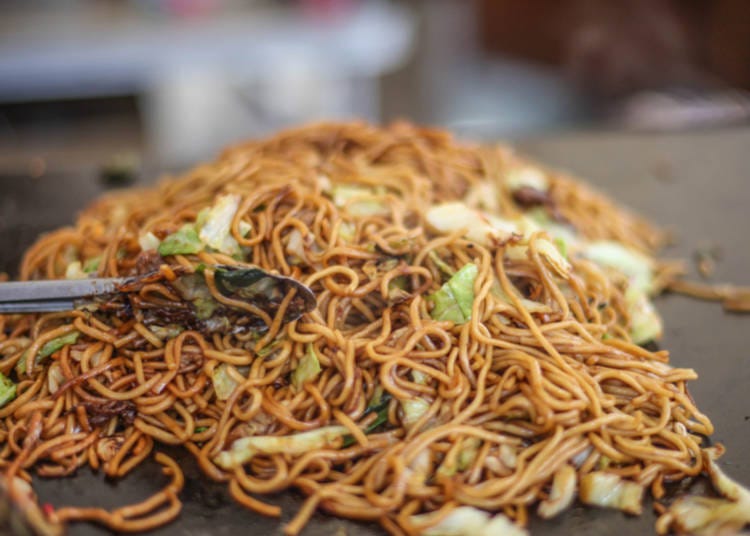
Yakisoba is a Japanese dish that consists of grilled soba noodles and is usually served at festivals. However, you can also make yakisoba by stir-frying the noodles. You can add various ingredients such as pork, fish, or vegetables and enhance the flavor with toppings like seaweed powder, ginger, and fish flakes. Finally, add sauces such as oyster sauce to give it a delicious taste.
31. Yakitori (焼き鳥): Savory Grilled Skewers
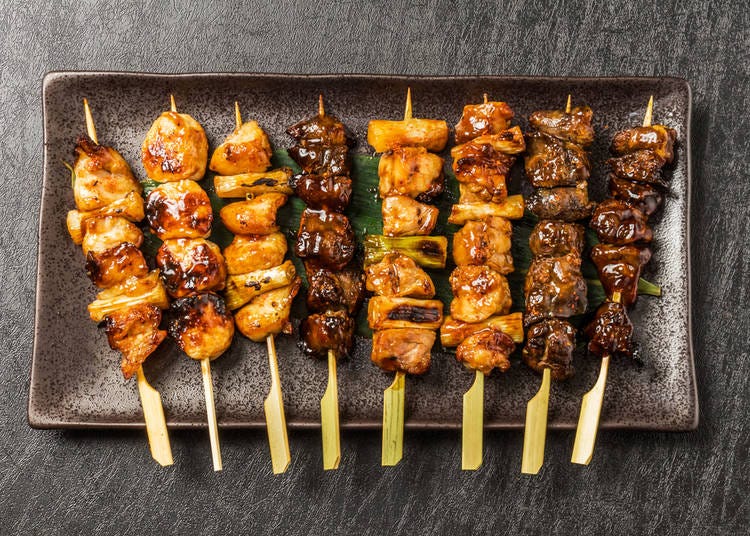
Yakitori, which literally means grilled chicken, actually refers to all kinds of skewered meat (as well as vegetables) cooked on a grill. This dish is simple yet flavorful, and there are countless combinations of ingredients to try. You can find Yakitori in many restaurants and specialty shops. When you visit a good izakaya, it is highly recommended to try this popular Japanese food.
32. Yakizakana (焼き魚): Grilled Fish Delicacies
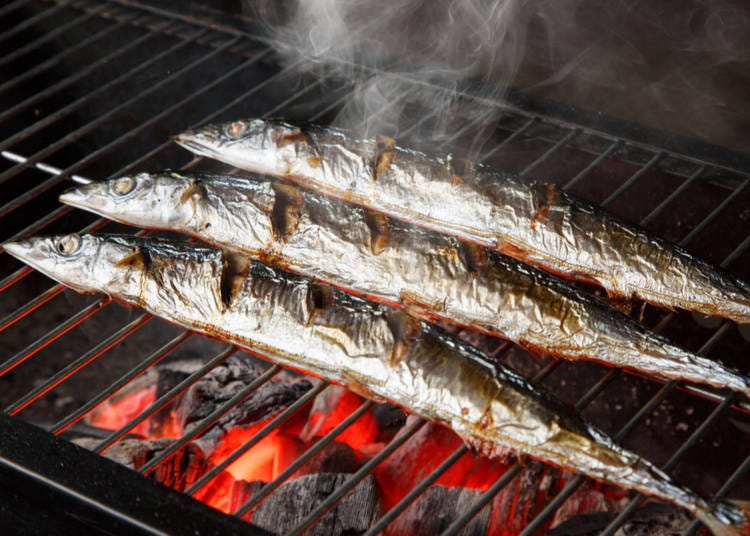
While in Japan, it's essential to try grilled fish, Yakizakana. Although sushi is more famous outside Japan, raw fish is not as common as grilled fish in the country. Typically, a whole fish is grilled and served with side dishes consisting of various vegetables and rice. You can try it at specialized restaurants for an immersive experience or at chain restaurants for a delicious, inexpensive, and quick meal that will keep you energized for several hours of sightseeing ahead.
You’re now on the way to become a true expert on food in Japan! Yet there’s much more to Japanese cuisine that can be discovered! While visiting this amazing country and taking in all the sights, the fun, and the culture, don’t forget to eat!
Lucio Maurizi is an automotive expert specializing in Japan's car scene and auto-tourism. With an MA in East Asian History from La Sapienza Università di Roma, he's a multi-talented contributor to travel platforms like LIVE JAPAN, Japan Travel, and GPlus Media. His Instagram account (50k+ followers) offers insider views on Japan's automotive culture. Lucio also actively collaborates with professional drivers and influencers and organizes can't-miss car events in Tokyo.
- Category
*Prices and options mentioned are subject to change.
*Unless stated otherwise, all prices include tax.
Recommended places for you
-
Menu

Ganso Kamameshi Haru
Japanese cuisine
Asakusa
-

Kagariya
Japanese cuisine
Nara, Ikoma, Tenri
-

NIIGATASADONOSYUNTOJIZAKENODOGURONOAKUBIOKACHIMACHI
Japanese cuisine
Ueno
-

JAPANESE CUISINE MOMOYA
Japanese cuisine
Kobe, Sannomiya, Kitano
-

Nichigekka Ginza
Japanese cuisine
Ginza
-

SakaguraMinamiichijo
Japanese cuisine
Sapporo / Chitose
-
Ad

Tokyo Comedy Bar: Where Jokes and Craft Beer Flow Freely
-

Hotel Green Plaza Hakone (Review): Soak in the View of Mt. Fuji from an Open-Air Hot Spring
by: Mayumi Kawai
-

B:Conte Asakusa: A Kitchen-Equipped Hotel Perfect for Tokyo Sightseeing, Family Trips, and Long Stays
by: Mayumi Kawai
-

Road Trip Around Izu Peninsula: Stunning Views, Hidden Gems, and Relaxing Hot Springs
by: Hide
-

Japan's Top Tourist Pitfalls—And How to Outsmart Them, According to a Tour Conductor
by: Miyu Shimada
-

Can Art Explain Godzilla? Tokyo's New Exhibit Takes a Shot
-

Tokyo Brunch: 4 of our Favorite Spots for a Japanese-style Brunch in Asakusa!
by: David McElhinney
-

Top 3 Restaurants: Best Sushi in Dotonbori According to a Local Food Critic
-
Ad

Healthy Alternative: Japanese ‘Rice Meister’ Pros Share 8 Recipes & Pairing Secrets!
-

Top 4 Go-To Spots for Tokyo Ramen
-

Kita no Kuni Bar in Shinjuku – Feasting on Fresh Hokkaido Delicacies in the Heart of Tokyo!
-

Visiting Japan's Miffy Cafe Will Make Your Heart Melt (Photos)
- #best sushi japan
- #what to do in odaiba
- #what to bring to japan
- #new years in tokyo
- #best ramen japan
- #what to buy in ameyoko
- #japanese nail trends
- #things to do japan
- #onsen tattoo friendly tokyo
- #daiso
- #best coffee japan
- #best japanese soft drinks
- #best yakiniku japan
- #japanese fashion culture
- #japanese convenience store snacks















